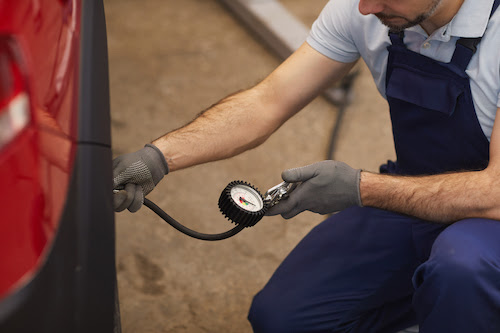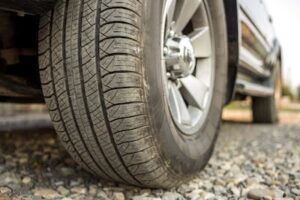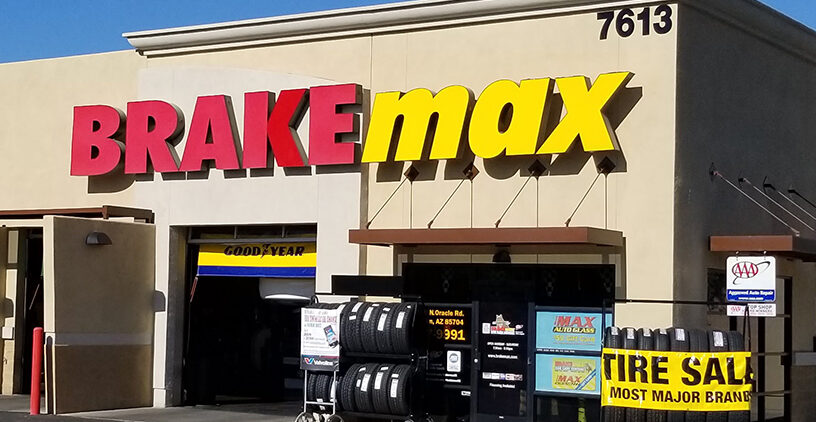TPMS: How To Diagnose and Repair Tire Pressure Monitoring Systems

Modern vehicles count on all sorts of elaborate computerized systems. You might assume the system powering your tire pressure warning light isn’t particularly complex by today’s standards, but you’d be surprised. In truth, tire pressure monitoring systems (TPMS) are highly sophisticated. That means that the sensors involved with this system must deliver incredibly precise readings.
If you’re a Tucson, AZ, driver, you don’t need to worry about handling TPMS sensor replacement alone. However, understanding how this process works is still a good idea. With that in mind, keep reading for an overview of how auto shops diagnose and repair problems with TPMS.
The TPMS Basics
It’s easy to ignore issues with your vehicle’s tire pressure — but even if underinflated tires don’t call much attention to themselves, they can be a much more significant safety hazard than you’d think. Believe it or not, tire pressure is often a contributing factor in car accidents.
Fortunately, TPMS can make it easy to monitor your tire pressure. These systems keep an eye on each of your wheels and give you a heads-up when your tire pressure is low enough to cause trouble. When it needs to warn you, your TPMS will turn on a dedicated dashboard light, which is typically a yellow light shaped like a tire’s cross-section and an exclamation point.
Direct and Indirect TPMS: What’s the Difference?
That should give you a simplified understanding of your TPMS. However, there are two different types of TPMS: indirect and direct. Here, you’ll have a chance to learn about both TPMS varieties.
Indirect TPMS
As the name suggests, indirect TPMS don’t actually measure tire pressure. These systems work by using wheel speed sensors — the same sensors your anti-lock brake system relies on. In indirect TPMS, the data collected by wheel speed sensors is sent to your car’s onboard computer. Since it knows how fast your wheels should spin, the onboard computer can figure out when a tire on your vehicle is rotating more quickly than usual, which might mean that this wheel is underinflated.
Indirect TPMS usually costs less and requires less maintenance than direct TPMS. The catch is that these systems are also less accurate than direct systems, especially when uneven tire wear is involved or you’ve installed new and different sized tires. Furthermore, you must reset these systems whenever you inflate or rotate your tires.
Direct TPMS
On the other hand, direct TPMS really do measure your vehicle’s tire pressure. These systems count on pressure monitoring sensors installed in each of your tires, so they don’t have to estimate their pressure levels based on how quickly they rotate.
Because of this, direct TPMS almost always provide more accurate results than indirect TPMS can — and they’re easy to recalibrate, too. The catch is that the proprietary nature of these systems makes them harder to install, repair, and replace.

How TPMS Maintenance Works
While a TPMS warning light should only turn on in response to tire pressure problems, that isn’t always the practice case. Common issues with this system include:
- Dead sensor batteries
- Valve damage/corrosion
- Trouble with the system’s wiring or electronics
- Failure to properly perform the relearn procedure after tire service
With all this in mind, Tucson tire shops should always inspect a car’s TPMS before working on it. To do this, mechanics use a specialized diagnostic tool to check for any problems with this system, either by manually selecting the vehicle’s year, make, and model or by scanning its vehicle identification number barcode. If this process brings any signs of trouble to light, mechanics should perform the correct relearn procedure after finishing their repair or maintenance work to reset the TPMS.
Sometimes, this won’t be enough to set things right in a vehicle. When TPMS sensors aren’t working correctly, mechanics need to replace them with new original equipment manufacturer or aftermarket sensors.
How Much Does It Cost To Replace TPMS Sensors?
Like any auto maintenance or repair service, tire sensor replacement isn’t free. However, this service is more affordable than the average auto repair, though the exact costs involved will vary.
Some factors that can affect your TPMS sensor replacement expenses include:
- The type of vehicle you drive
- Your vehicle’s brand
- The kind of TPMS sensor your car uses
- How many sensors need to be replaced
Another factor worth considering is where you get this work taken care of. While your dealership can undoubtedly replace a tire sensor, there’s a good chance that they’ll charge you through the nose for this service. Thus, it’s probably in your best interest to find a qualified mechanic at a local Tucson tire shop for this job instead.
Get Tire Service You Can Count On
No matter what type of TPMS your car uses, these systems need to be looked at by professionals when something goes wrong. For drivers in and around Tucson, BRAKEmax Tire & Service Centers is the best place to go for this work. Our ASE-certified mechanics are more than capable of handling TPMS sensor replacement, and our low rates mean the cost to replace TPMS sensors in your vehicle will be minimal.
Of course, tire sensor replacement isn’t the only thing we do at BRAKEmax. Other tire services we offer include tire rotation and tire balancing, wheel alignment, and tire repair.
If you need any of these services, schedule an appointment today!









